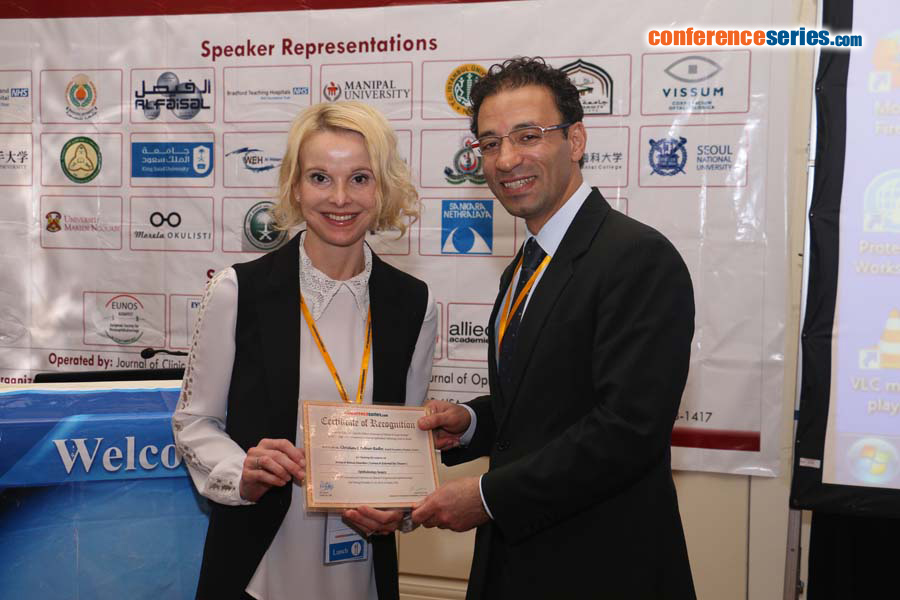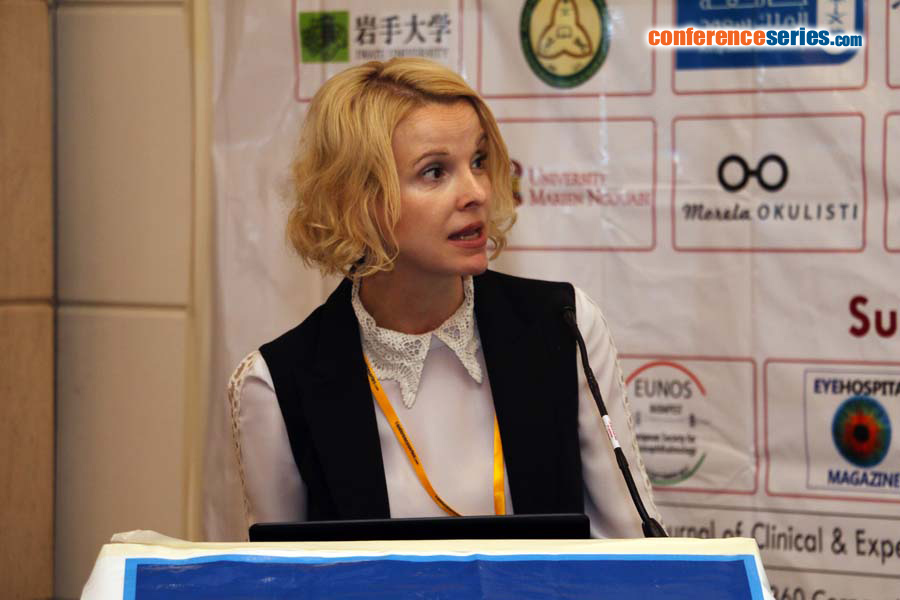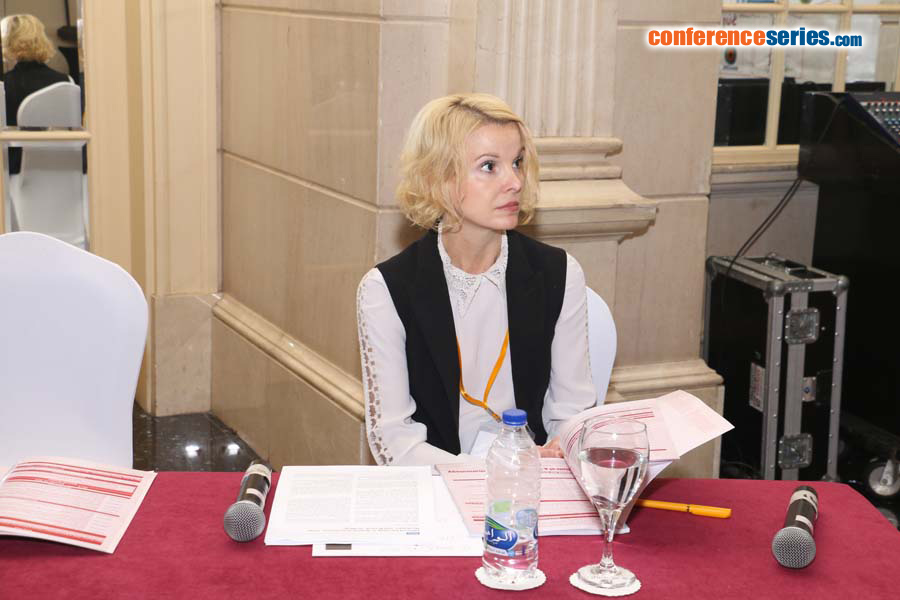
Christiane I Falkner-Radler
Rudolf Foundation Hospital
Austria
Title: 27-gauge vitrectomy for vitreoretinal disorders
Biography
Biography: Christiane I Falkner-Radler
Abstract
Purpose: To evaluate anatomic, functional and refractive outcomes after 27-gauge vitrectomy in a prospective study.
Methods: The study was designed to include patients presenting with vitreoretinal disorders (epiretinal membrane [ERM], macular holes, asteroid hyalosis and vitreomacular traction [VMT]) with or without coexisting significant cataract. Exclusion criteria were (1) patients with rhegmatogenous or tractional detachment, (2) previous vitreoretinal surgery and (3) the need for silicone oil tamponade. Surgical conditions using a scaled questionnaire, complication rates, IOP, functional and refractive outcomes were evaluated.
Results: Up to now, 60 patients, 41 females and 19 males with a mean age of 72 years, have completed the 3 months follow-up. The vitreoretinal diagnosis was ERM in 36 eyes, macular holes in 9 eyes, VMT in 2 eyes, and asteroid hyalosis in 13 eyes. 47 eyes cataract surgery was combined with vitrectomy. Intraoperative conditions were graded good to excellent. However, a slightly increased time needed for core vitrectomy was noted and particularly in hyperopic and left eyes the 27 gauge instruments were graded to be more flexible. No wound leakage was found and the IOP was stable in all eyes. Complication rates included a mild postoperative vitreous hemorrhage in one patient which spontaneously resolved during follow-up. Visual acuity improved in all patients and the refractive results in the combined cases were excellent.
Conclusions: These results suggest that 27 gauge vitrectomy with or without combined cataract surgery results in excellent wound architecture and offers promising functional and refractive results.




